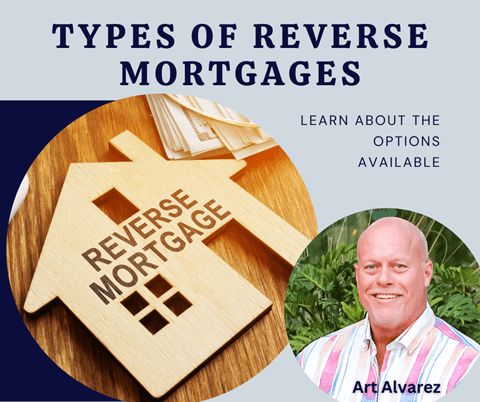
Ever feel like your home’s just sitting there, a treasure chest you can’t unlock? Enter the reverse mortgage, a twist in the homeownership tale that flips the script. It’s not your everyday loan; it gives back without monthly payments nipping at your heels.
Picturing yourself sailing through retirement with ease?
The Coachella Valley sun sets, painting the sky with promises of golden years made more comfortable. But, of course, there’s a catch? Like all good things, this too comes wrapped in fine print and complexities.
You’re right to wonder about taxes or insurance premiums and how they play out when reverse mortgages enter the scene. And what about eligibility or different types?
Stick around; by journey’s end, you’ll have unraveled these mysteries—and maybe found keys to doors you didn’t know existed.
MortgageWorks offers financing for new home purchases, refinance, home equity, investment property, construction, and a wide variety of loan program options to fit your every need. Servicing California and the entire Coachella Valley, including Palm Springs, Cathedral City, Rancho Mirage, Indian Wells, Palm Desert, Desert Hot Springs, La Quinta, Indio, and Coachella. Call Art today @ (760) 883-5700
Understanding Reverse Mortgages in the Coachella Valley
If you are situated amidst the balmy surroundings of the Coachella Valley and pondering your fiscal prospects, a reverse mortgage could be just the answer to your prayers. It’s not your regular mortgage; it flips the script on traditional home loans by allowing older homeowners to convert part of their equity into cash without selling up or facing monthly payments.
The Mechanics of How Reverse Mortgages Work
Imagine this: instead of sending checks to a lender, with a reverse mortgage loan, you get checks from them. Sounds pretty sweet, right? But wait—it gets better. With options like lump sum payouts or term payments tailor-made for retirees’ needs—and let’s not forget about that handy line of credit—the Home Equity Conversion Mortgage (HECM) is like having an ace up your sleeve when playing against Father Time.
A HECM reverse mortgage stands out because it has a growth feature—think of it as a fine wine getting better over time; only here, we’re talking about your line of credit swelling rather than shrinking with each passing year. Unlike its cousin HELOC where monthly payments are standard fare and balances freeze at best, these lines come alive growing steadily—giving peace-of-mind that there’s more financial wiggle room ahead.
Accessing Funds Through a Reverse Mortgage
Dive deeper into how one taps into this fountain of youth-like financing tool, and you’ll find versatility staring back at you. You can opt for tenured payments guaranteeing steady income until ‘The End’ title card rolls—or perhaps grab all available funds upfront if big expenses call (like finally splurging on that golden-years RV trip).
Intrigued by what could lie behind door number three? Then consider exploring HUD’s website, which will enlighten curious minds further about setting sail with HECM reverse mortgages without leaving port unprepared.
Key Takeaway:
Turn your Coachella Valley home equity into cash without monthly payments, using a reverse mortgage. With options like lump sums and growing lines of credit, it’s financial flexibility tailored for retirees.
Dive into the HECM program to discover how you can secure a steady income or fund big dreams in retirement.
The Mechanics of How Reverse Mortgages Work
Picture this: you’re sitting on a gold mine, but it’s not buried treasure—it’s your home. That’s where reverse mortgages work their magic. Unlike regular mortgages that keep you on the hook for monthly payments, these loans flip the script and pay you. It sounds like finding an oasis in Coachella Valley—refreshing and full of potential.
Funds Through a Reverse Mortgage

You’ve got options when it comes to getting cash from a reverse mortgage. Want all your money at once? Go for the lump sum payout; it’s straightforward—like taking the whole pie instead of just a slice. Prefer smaller, consistent slices over time? Then term or tenured payments are more your speed, delivering funds each month as steady as desert sunshine.
If flexibility is key, there’s also the line of credit route—a pot that grows over time (even if you don’t touch it), thanks to its unique growth feature. Imagine planting seeds in fertile soil and watching them sprout into dollars—the HECM reverse mortgage does exactly that with no monthly payment due back until later down the road.
Growth Feature of HECM Line of Credit
Surely by now we know traditional HELOCs require repayments with interest added every month—not so much fun under Coachella Valley’s sun. But here comes our hero: The equity conversion mortgage swoops in with its growing line of credit which increases without any required monthly repayments from your side; talk about having cake and eating it too.
This nifty financial tool gets better because unlike other lines out there—the limit on what you can borrow isn’t fixed but expands over time, giving peace-of-mind faster than cooling off in the shade after a midday heatwave.
Key Takeaway:
Reverse mortgages let you tap into your home equity, giving you cash without monthly payments. Like finding treasure in Coachella Valley, these loans can pay out as a lump sum, steady monthly amounts, or through a flexible line of credit that grows over time—without the heat of immediate repayments.
Comparing Reverse Mortgages with Other Home Equity Products
Reverse Mortgage vs. Home Equity Line of Credit
When you’re weighing your options to tap into your home’s equity, think of a reverse mortgage LOC and a traditional HELOC as two sides of the same coin—both let you access cash, but they play by different rules. A reverse mortgage line of credit is like an old jazz record; it has its own rhythm and style. You don’t have monthly payments hanging over your head, giving you that financial freedom beat to dance to.
In contrast, a HELOC demands a regular payment tune-up which can vary based on how much dough you’ve borrowed against the house. Plus, while both provide flexible access to funds, only with a reverse mortgage does your credit limit groove higher over time without requiring additional borrowing moves from your side.
Reverse Mortgage vs. Equity Loans
If we flip the disc over to compare home equity loans, here’s where things get jazzy: these are more like hitting one note—a lump sum payout—with steady monthly payments until the loan’s finale. With this kind of gig though comes peace of mind since there’s no surprise in what each month brings financially speaking.
A reverse mortgage loan, however? It puts on quite the show. As long as you live in that pad and keep up with taxes and insurance costs—you’re good; there are no monthly beats to follow unless you choose them (cue term or tenured payments). But remember—the amount owed grows louder every year because interest compounds on top.
We’re not just spinning records here—choosing between these home equity options is crucial for Coachella Valley homeowners who want their retirement years filled with harmony instead of unexpected solos.
Key Takeaway:
Think of reverse mortgages as the jazz to home equity’s rock ‘n’ roll. They give you freedom without monthly payments, and your credit line even grows over time. HELOCs and equity loans keep a steady beat with regular payments but don’t offer that same flexibility or growth.
Financial Implications for Coachella Valley Homeowners
Property Taxes and Reverse Mortgages
Owning a home in the sunny Coachella Valley comes with its perks, but let’s talk turkey about property taxes when you’ve got a reverse mortgage. You still need to pay taxes on your desert oasis; not even a clever mortgage option can change that fact. It’s like having an all-access pass to the best festivals around but forgetting sunscreen—you’ve got to cover your bases.
A reverse mortgage doesn’t mean tax-free living; it simply means your monthly payment headache is gone since you’re getting cash out of your home equity instead. But remember, Uncle Sam wants his share, so make sure those property tax bills are paid up if you want to keep grooving without any hiccups at home.
Insurance Premiums in Reverse Mortgages
Moving on from taxes, let’s chat about insurance premiums—another must-have tune in the soundtrack of homeownership. Securing a reverse mortgage means staying current with these payments too because they’re part of keeping the deal sweet and legit.
The twist here? Your insurance premium isn’t just some arbitrary number—it’s what keeps you covered if something goes sideways with your housing administration-approved financial plan. Think of it as buying peace of mind by the poolside: sipping lemonade knowing everything’s handled should clouds roll over that Palm Springs sunshine.
In short, whether we’re talking federal or private reverse mortgages—and yes, there are both flavors available—the game stays pretty much the same: Keep paying property taxes and insurance premiums like clockwork or risk hitting a sour note on this potentially lucrative gig called homeownership in Coachella Valley.
Eligibility Requirements for Obtaining a Reverse Mortgage
If you’re nestled in the Coachella Valley and considering a reverse mortgage, knowing if you tick all the boxes on eligibility can be as important as your next golf swing. It’s not just about wanting to tap into that home equity; it’s about meeting specific criteria set by folks like the Federal Housing Administration (FHA).
Age and Equity Criteria
You’ve got to have some skin in the game – or rather, age under your belt. To qualify for this type of loan, being at least 62 years old is non-negotiable. Think of it as an exclusive club where life experience counts more than money in your pocket. But wait, there’s more. Your home needs to bring something to the table too: enough equity. You should outright own your home or at least have a significant chunk paid off.
Beyond these basics, income requirements aren’t as strict compared with regular mortgages because reverse mortgages pay you – no monthly payments necessary here.
Counseling Session Prior to Agreement
Prioritizing smart decisions means taking advice from those who know best before signing any dotted lines—enter mandatory counseling sessions with certified counselors from agencies approved by HUD’s website. These gurus help clarify what a HECM reverse mortgage entails and whether it fits snugly into your financial plans.
This step isn’t just busywork; think of it like prepping for one of Palm Springs’ famed music festivals – crucial planning ensures everything goes smoothly when showtime arrives.
So while visions of no longer needing to make that pesky monthly payment dance through your head remember this: qualifying involves ticking off boxes beyond simply owning property in sunny California—age matters, equity stands tall, and guidance paves the way. Dive deep into understanding these nuances before joining others who’ve found relief through such loans within our local desert haven.
Key Takeaway:
To snag a reverse mortgage in Coachella Valley, you must be 62 or older with enough home equity. Don’t skip the mandatory counseling—it’s your prep for smooth sailing ahead.
Types of Reverse Mortgages Available

Single-Purpose Reverse Mortgages
Think of single-purpose reverse mortgages as the Swiss Army knife in your financial toolkit—simple, yet specifically designed for a particular job. These are the most affordable options and are offered by some state and local government agencies to be used for one purpose that they specify, such as home repairs or property taxes. But remember, like a good camping spot in Coachella Valley, these can be hard to find since not all areas offer them.
The upside? They come with low upfront costs which means more money stays in your pocket. The catch is you’ve got to stick with what it’s meant for; no using this cash for a desert road trip.
Proprietary Reverse Mortgages
If federal limits cramp your style because you own higher-value property, proprietary reverse mortgages might just be your ticket to freedom. These private loans aren’t insured by Uncle Sam but let you tap into larger amounts of equity than HECMs offer—perfect if your nest egg is tied up in an upscale pad.
Lenders offering these bad boys often cook up their own rules and rates though so shopping around pays off big time here. Just watch out: while they may put more cash at hand right away, the price tag over time could make even luxury-lovers’ eyes water.
HECM – The Most Common Type of Reverse Mortgage
A Home Equity Conversion Mortgage (HECM) is like that popular kid everyone knows—and there’s good reason why it’s common among homeowners looking for flexibility without too much fuss from government agencies. Insured by the Federal Housing Administration (FHA), HECMs swing open doors wide enough to accommodate various needs with options including lump sums, term payments, or lines of credit that grow over time faster than cacti after rain.
No monthly payments gnawing at you either; instead think about how sweet life will taste when funds increase year on year—a feature unique to HECMs backed by HUD’s website. Whether choosing fixed rate magic or variable rate mystery adds spice depends on personal taste but know this: unlike spicy food contests where tears flow freely later on—you won’t owe more than what’s fair value-wise when settling up.
Key Takeaway:
Reverse mortgages come in different flavors, tailored to your financial needs. Single-purpose reverse mortgages are the budget-friendly choice for specific expenses like home repairs. Got a pricey pad? Proprietary loans might suit you better but watch those rates. HECMs? They’re versatile and grow over time, with no monthly payments to worry about.
Conclusion
Unlocking your home’s equity can be a game-changer. A reverse mortgage lets you do just that, without the monthly payment blues. Think of it as getting an advance on your own savings—your house pays out, and life in Coachella Valley gets sweeter.
Digging into the details? You’ve learned how different these loans are from regular mortgages or HELOCs; they’re tailored for folks who’ve hit 62 and want to stay put while tapping into their nest egg.
Growing older shouldn’t mean growing worries about cash flow. With options like HECM lines of credit expanding over time, this tool could be the silver lining to your golden years.
Remember: Taxes still need paying, insurance isn’t optional—it’s all part of keeping your deal solid with lenders offering these unique mortgage paybacks.

